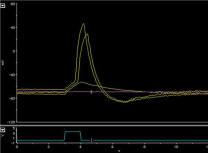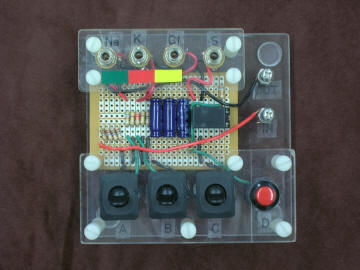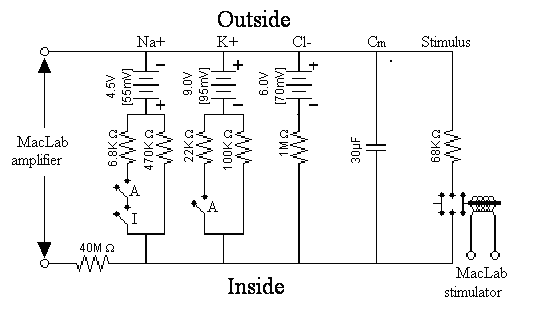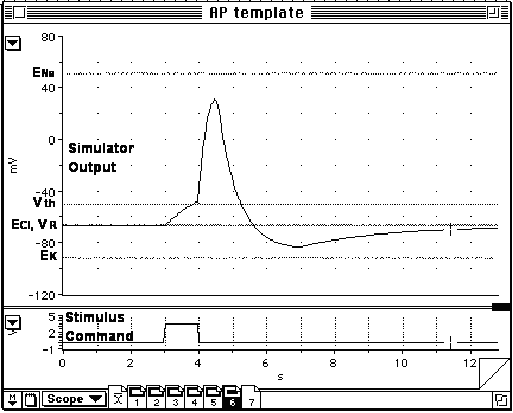Gated Equivalent Circuit
Action Potential Model


This board is a Hodgkin-Huxley equivalent circuit for loosely simulating the sequence of conductance changes which generate the voltage excursion of the action potential in a single-compartment model.
As diagrammed above, sodium, potassium, and chloride have separate conductance routes across the membrane and independent equilibrium potentials provided by three DC voltage supplies. Three simple switches correspond to H-H sodium activation, sodium inactivation, and potassium activation processes. These "gate" processes are manually operated by the student to generate a trace which approximates the time course of the action potential, stretched to more than 6 seconds. Obviously a single switch cannot emulate a population of channel gates, so a disproportionately large transmembrane capacitance is used to round out the trace (see below). An initial "PSP" can be manually or automatically triggered via a parallel "stimulus" circuit. A 40MW resitance on one output lead is used to step down the output voltage and to provide impedance-matching with the PowerLab recording system.
As described in Laboratory #10 of the BIO325 manual, this model is used in a discovery- based exercise. Students are tasked with throwing the three switches with the appropriate sequence and timing to match a template trace. As they proceed by trial-and-error, they gain hands-on experience with the relative gate kinetics of the H-H m, h, and n processes. Individual components can be varied to study the contributions of each, e.g. changing equilibrium potentials or eliminating K-activation at mammalian nodes of Ranvier.
Printouts of the results of using this model as described in laboratory #10 are available online in a poster (PowerPoint format) or upon request from brhoades@wesleyancollege.edu .


